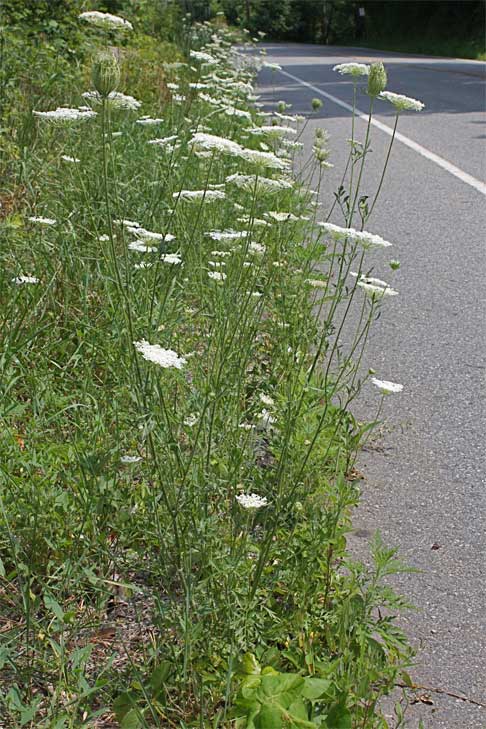
Where the day lilies used to bloom, Queen Anne’s Lace now rules the roadsides. The delicate white umbels nod and sway gracefully as if they are waving hello as you pass by. For a lowly member of the carrot family, it has had bestowed upon it a truly royal name.
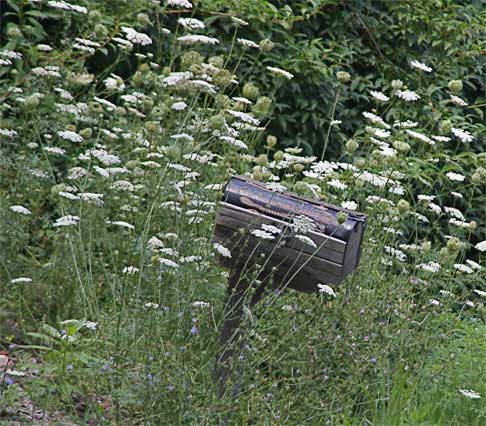
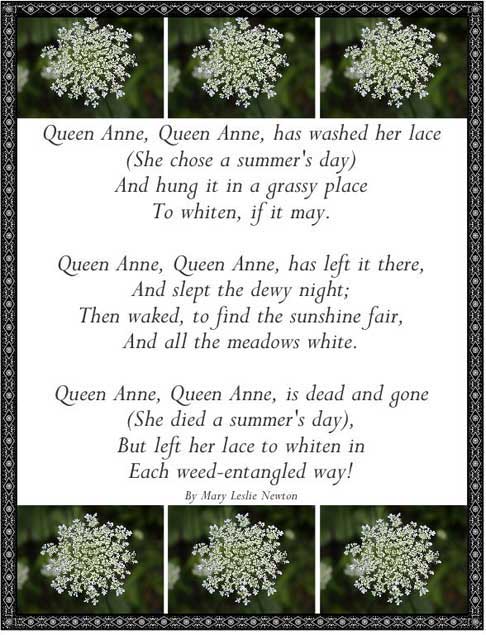
Just how did it come by its name? The American legend says that Anne of Denmark (1574-1619), queen consort of King James I, was an expert lace-maker. The central flower of the carrot’s umbel is reddish-purple. This odd flower was placed upon the umbel for the time Anne pricked her finger and a drop of blood stained the lace. According to Webster’s Ninth New Collegiate Dictionary the name Queen Anne’s lace did not appear in print until 1895, two hundred seventy-six years after Anne’s death.
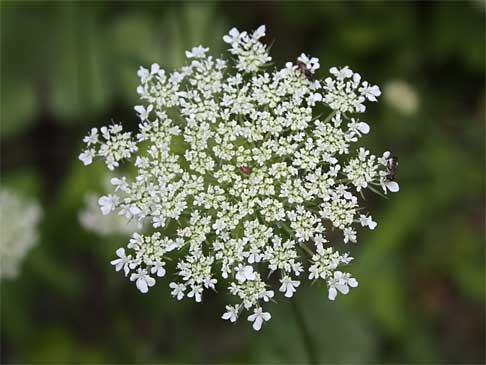
Another legend says:
Queen Anne’s Lace is said to have been named after Queen Anne of England, an expert lace maker. English legend tells us that Queen Anne challenged the ladies of the court to a contest to see who could produce a pattern of lace as lovely as the flower of this plant. No one could rival the queen’s handiwork. She however, pricked her finger with a needle and a single drop of blood fell into the lace, that is said to be the dark purple floret in the center of the flower.
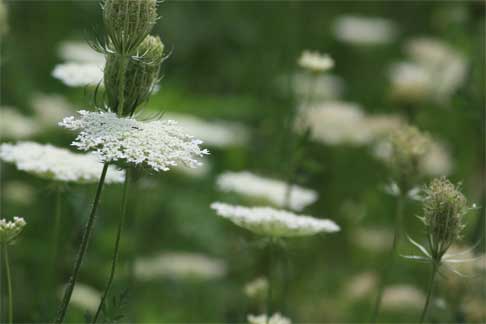
One anecdote says Queen Anne’s Lace is so called because one tiny purplish floret in the center is the queen. The white florets make up her lace collar.
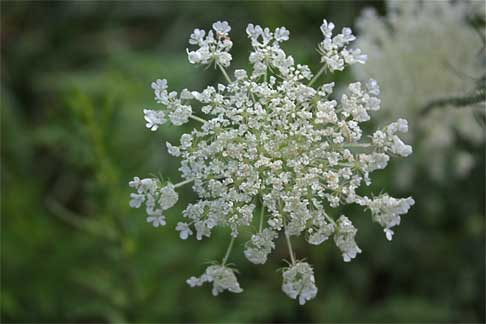
Yet another says that the white clusters apparently reminded the British of Queen Anne’s lace headdress.
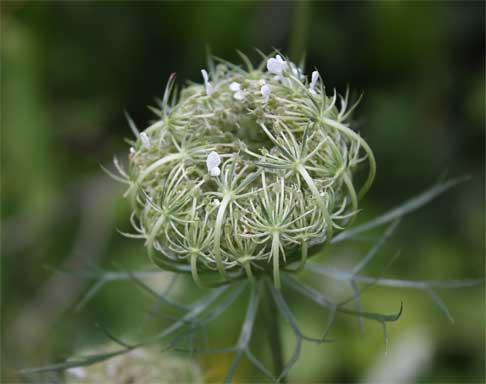
English botanist Geoffrey Grigson suggests that the name of the plant comes not from a Queen of England but from Saint Anne, the mother of the Virgin Mary and the patron saint of lacemakers.
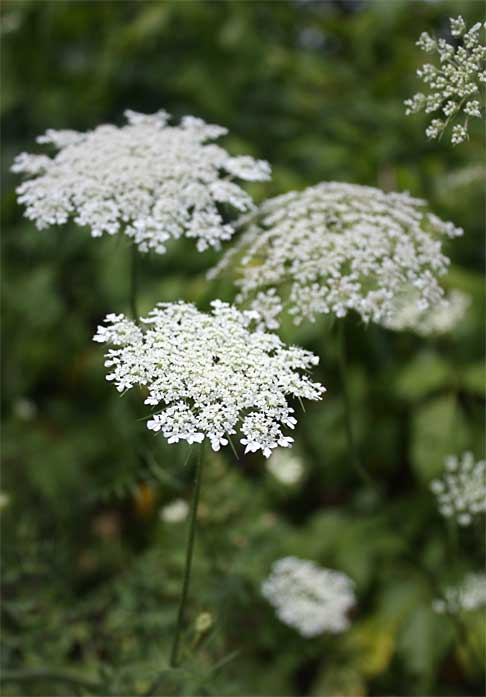
Whatever the true origin of its name, this lacey lovely graces the ground wherever it grows.
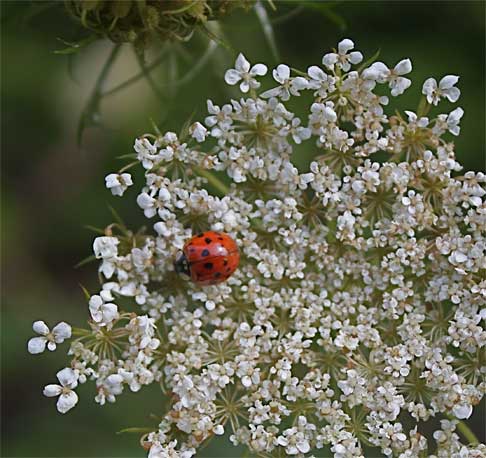
Posted by Lynne on 08/07/2008 at 05:19 AM
Filed under:
Daily Life •
Life in New Jersey •
Trees, flowers
